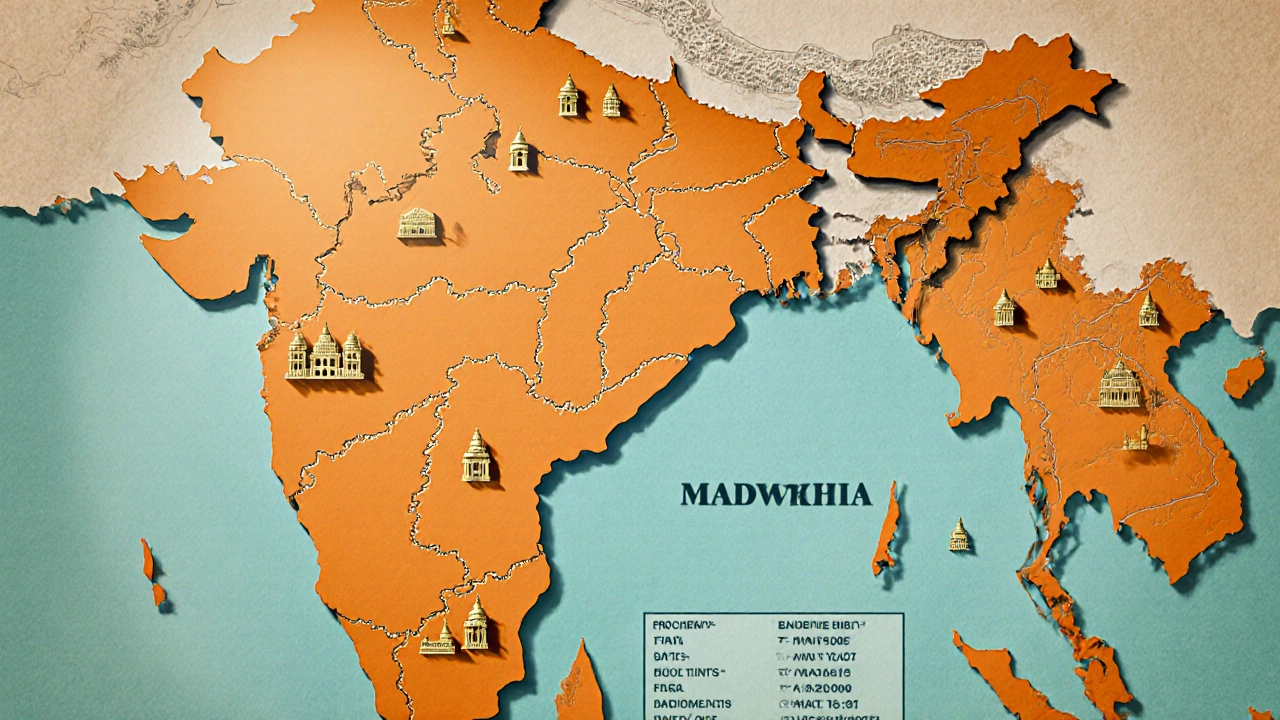
Madhya Pradesh leads India with over 1,500 protected heritage sites, outpacing Uttar Pradesh and Rajasthan. Discover counts, top monuments, travel routes and preservation tips.
When you think about heritage sites India, the living record of the subcontinent’s art, architecture, and history, recognized by UNESCO and the Indian government. Also known as Indian heritage sites, they span ancient forts, Buddhist caves, colonial towns, and natural landscapes. UNESCO World Heritage Sites, globally recognized landmarks like the Taj Mahal or the Sun Temple at Konark form the core of this collection, while Indian Monuments, regional forts, temples, and step‑wells that showcase local styles add depth. Cultural Tourism, travel focused on experiencing traditions, festivals, and heritage crafts ties everything together, turning a visit into a story worth sharing.
Heritage sites in India require careful preservation because they hold clues about ancient trade routes, religious practices, and engineering feats. The government’s Archaeological Survey of India (ASI) and local NGOs work hand‑in‑hand to protect these treasures, but tourism pressure can be a double‑edged sword. When travelers respect guidelines—like no touching carvings or staying on marked paths—they help sustain the sites for future generations. This dynamic creates a clear semantic triple: heritage sites India influence cultural tourism, and cultural tourism drives preservation efforts.
Another key relationship is that heritage sites India encompass a range of sub‑categories, from UNESCO World Heritage Sites to regional archaeological sites. For example, the rock‑cut caves of Ajanta and Ellora demonstrate Buddhist art, while the forts of Rajasthan showcase Rajput military architecture. Understanding these sub‑topics lets you plan trips that match your interests, whether you crave grand marble marvels or quiet desert forts.
Travelers often ask which heritage sites offer the best mix of history and accessibility. The answer varies by region: the Golden Triangle—Delhi, Agra, Jaipur—packs several UNESCO sites and well‑connected rail links, while the Western Ghats host lesser‑known temples surrounded by biodiversity. Knowing the logistics helps you balance crowd levels, climate, and local festivals. For instance, visiting the Sun Temple during the Konark Dance Festival adds a vibrant cultural layer to the architectural wonder.
Finally, heritage sites India support local economies. Villagers near UNESCO sites often sell handcrafted souvenirs, run homestays, or guide tours, creating a virtuous circle where tourism funds preservation. This economic tie is another semantic triple: cultural tourism boosts heritage site sustainability, which enhances community livelihoods.
Below, you’ll find a curated list of articles that dive deeper into specific sites, travel tips, safety advice, and cost guides. Whether you’re planning a first‑time trip or revisiting a favorite monument, these resources will give you practical insights and fresh angles on India’s incredible heritage landscape.

Madhya Pradesh leads India with over 1,500 protected heritage sites, outpacing Uttar Pradesh and Rajasthan. Discover counts, top monuments, travel routes and preservation tips.